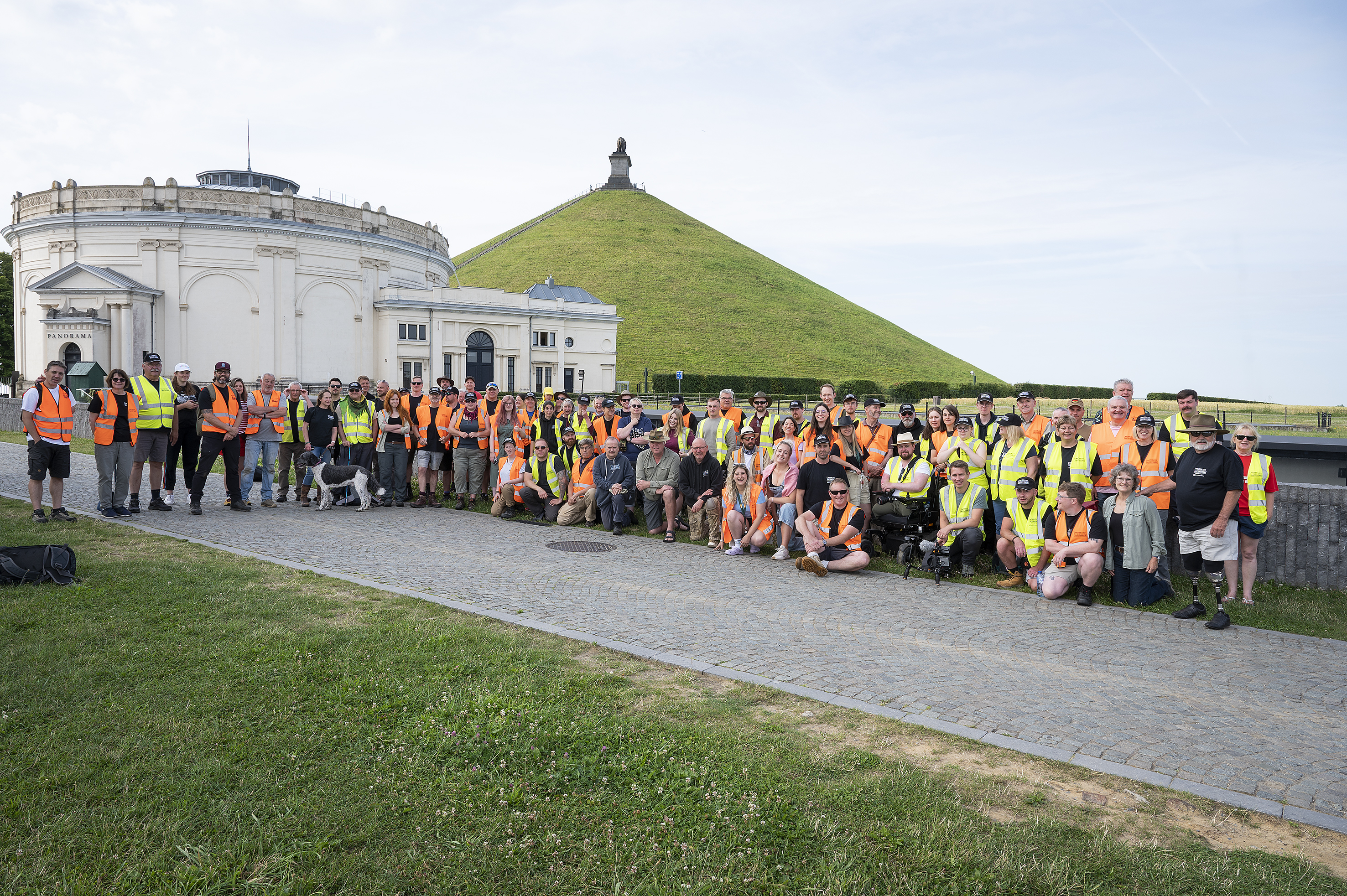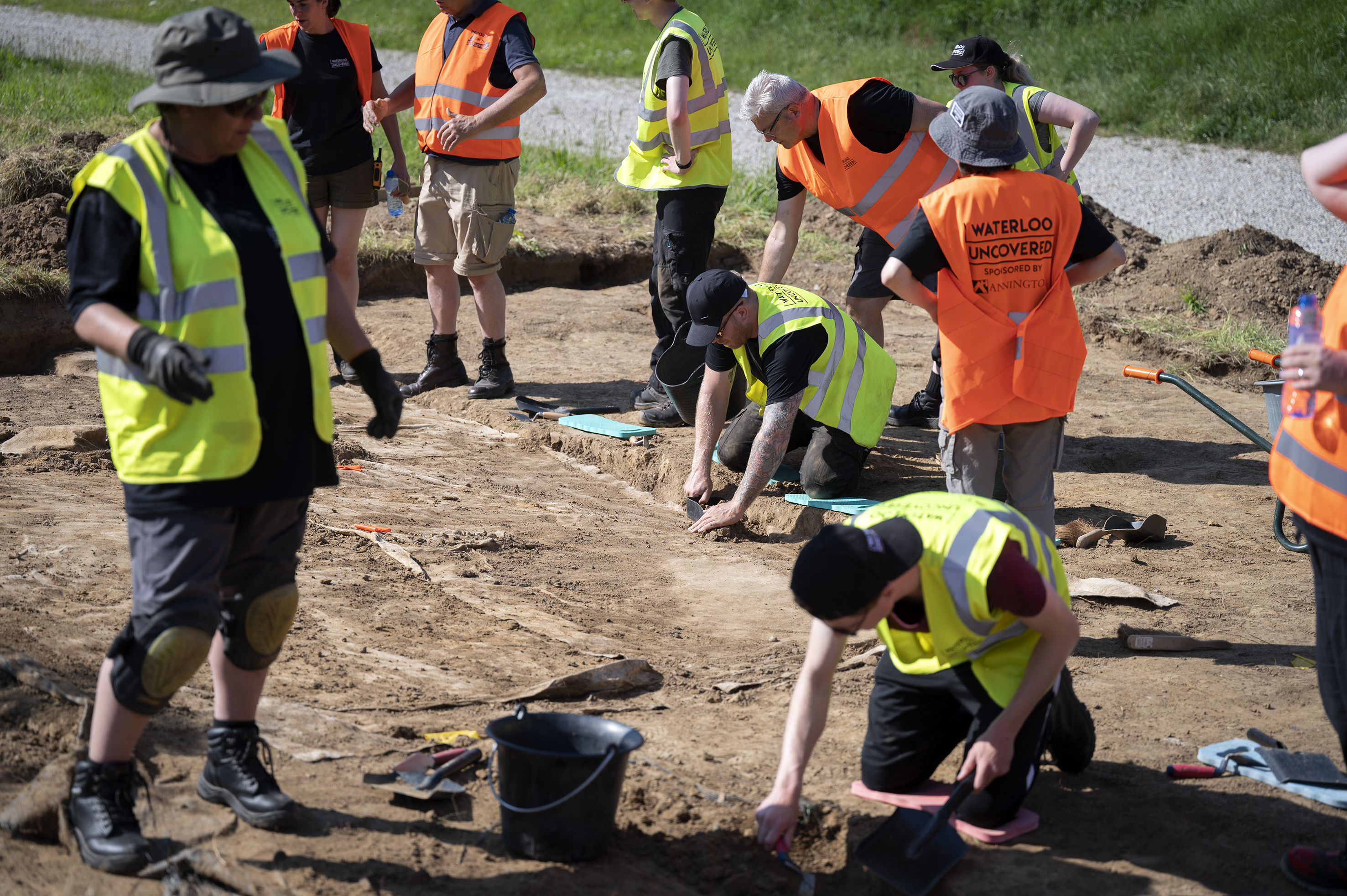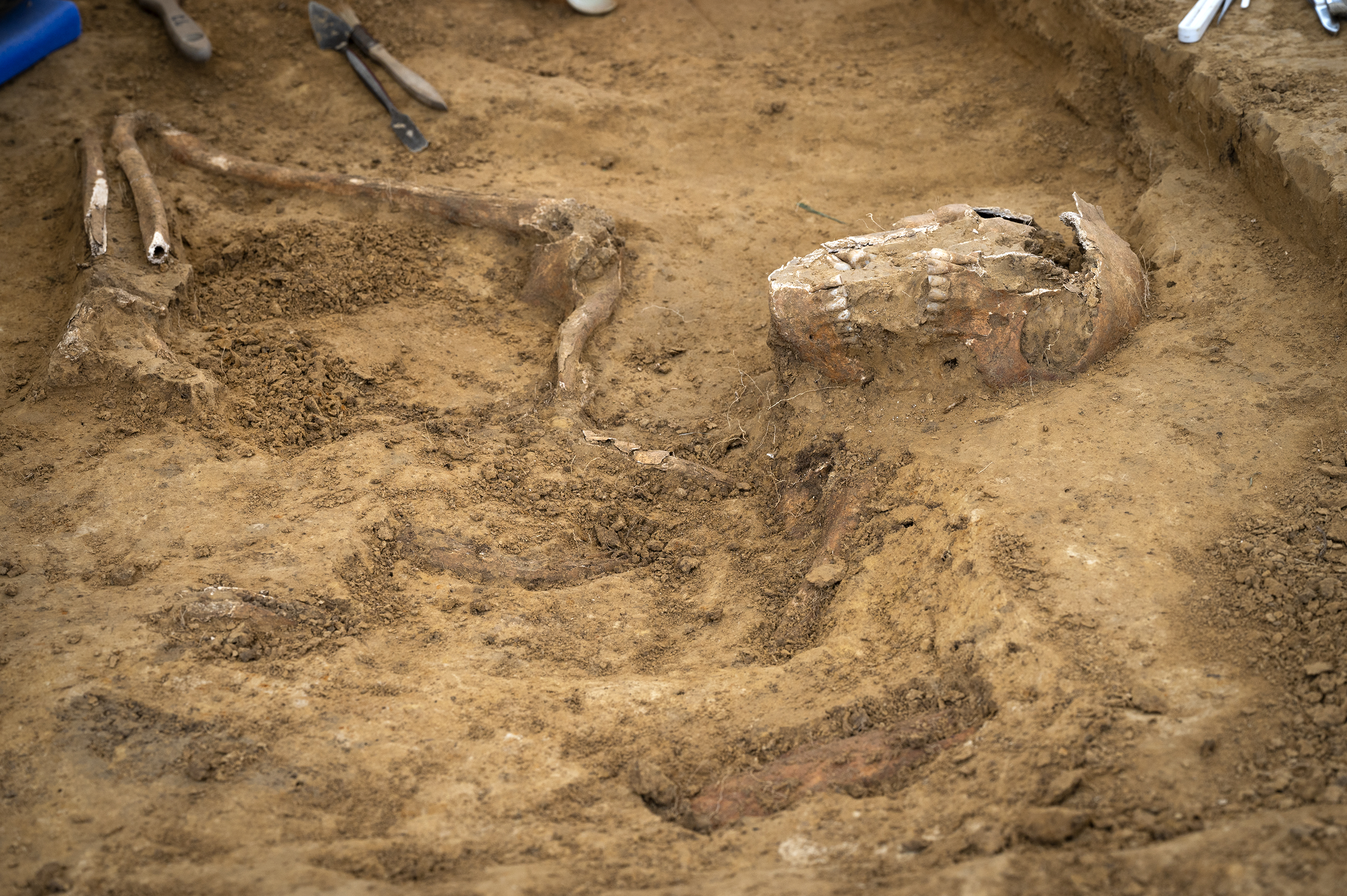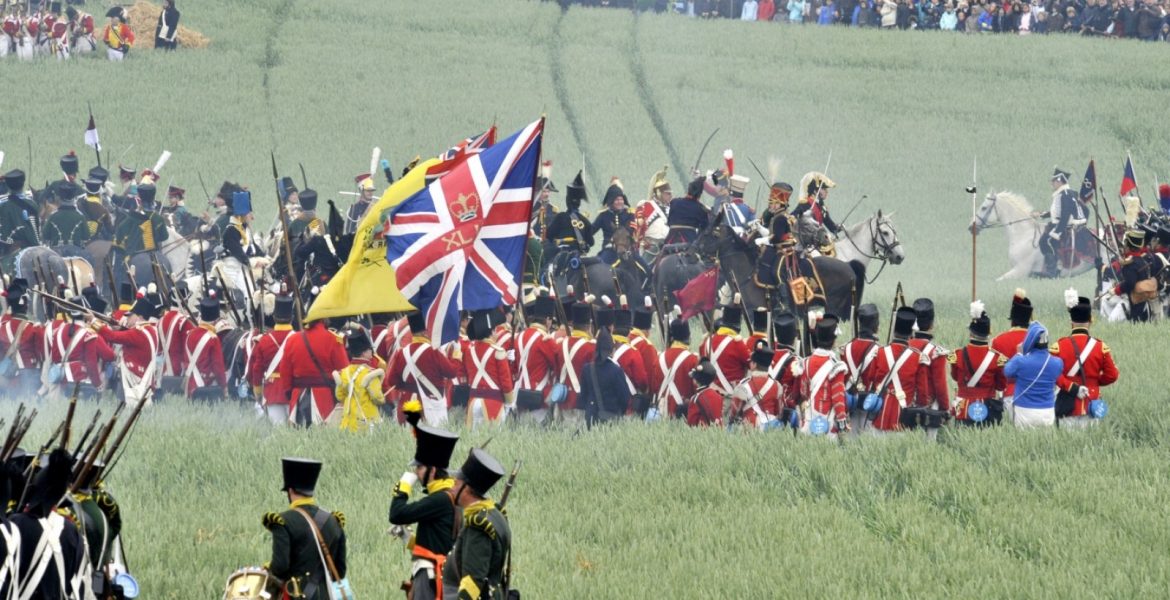An international team of military veterans working alongside archaeologists on the battlefield of Waterloo have discovered a rare complete skeleton of a soldier from the battle 200 years ago.
As many as 20,000 men fell on a single day in June 1815 in the epic battle near Brussels in Belgium that forever ended Napoleon’s dreams of empire. And yet for two centuries a mystery has endured about what happened to their remains.
Now the team from Waterloo Uncovered – the charity that helps today’s veterans and military personnel recover from injury and the impacts of their service – has made a significant find on the site of Wellington’s field hospital at Mont-Saint-Jean.
The charity has been excavating at Waterloo since 2015, and in that time has added a huge amount to our understanding of this cataclysmic battle involving men from many European nations.
Returning to excavate on the battlefield for the first time since the pandemic, Waterloo Uncovered have found significant new evidence of the suffering and endurance involved.

Working at the site of the Allied field hospital at the farm of Mont-Saint-Jean, the team is carefully excavating the intact skeleton of a soldier, lying amid ammunition boxes, medical waste and the bones of legs and arms, amputated by surgeons in their struggle to save the wounded.
Professor Tony Pollard, one of the project’s Archaeological Directors and Director of the Centre for Battlefield Archaeology at Glasgow University, says, “I’ve been a battlefield archaeologist for 20 years and have never seen anything like it. We won’t get any closer to the harsh reality of Waterloo than this.”
Rod Eldridge, one of the project’s Lead Welfare Officers and a veteran, added, “Finding human remains can invoke a range of strong emotions, from excitement at their discovery to understandable sadness and reverence, as this is likely to be a soldier, just as those excavating it with Waterloo Uncovered are.”

“There are strong feelings amongst the team that the bones must be treated with respect and dignity at all times.”
Whilst the battle itself was bloody and brutal, the attitude to the dead on both sides seems callous in the light of modern attitudes.
Many Waterloo dead are thought to have been burnt on pyres, while others were shipped to the UK as part of a gruesome trade in fertiliser made from human bones. In addition, many bodies were likely piled into mass graves that have not yet been discovered, in order to clear the battlefield of the thousands of bodies that littered it.
Waterloo Uncovered is exploring this possibility in 2022 with the first ever large-scale geophysical survey of the Waterloo battlefield. Led by PhD candidate Duncan Williams, the survey will identify anomalies in the landscape – potentially indicating mass graves, large collections of metal or lost structures – which will be explored by the team.
The skeleton found at Mont-Saint-Jean was uncovered in what was likely a roadside ditch beside the farmhouse. In 2019, the charity discovered amputated limbs in the same ditch, not far from the field hospital where an estimated 500 amputations took place, and limbs were said to have “piled up in the corners of the courtyard”.

Véronique Moulaert from AWaP, one of the project’s partners, explained the grim picture painted by the proximity of amputated limbs and an articulated body, ‘”Finding a skeleton in the same trench as ammunition boxes and amputated limbs shows the state of emergency the field hospital would have been in during the battle – dead soldiers, amputated limbs and more would have had to be swept into nearby ditches and quickly buried in a desperate attempt to contain the spread of disease around the hospital.”
The dig has uncovered other, poignant evidence of the scale of suffering resulting from a Napoleonic battle, in the form of a number of horse bones.
It’s estimated that several thousand horses were also killed during the battle, as the glittering glory of the cavalry charge ended in death for all too many.




